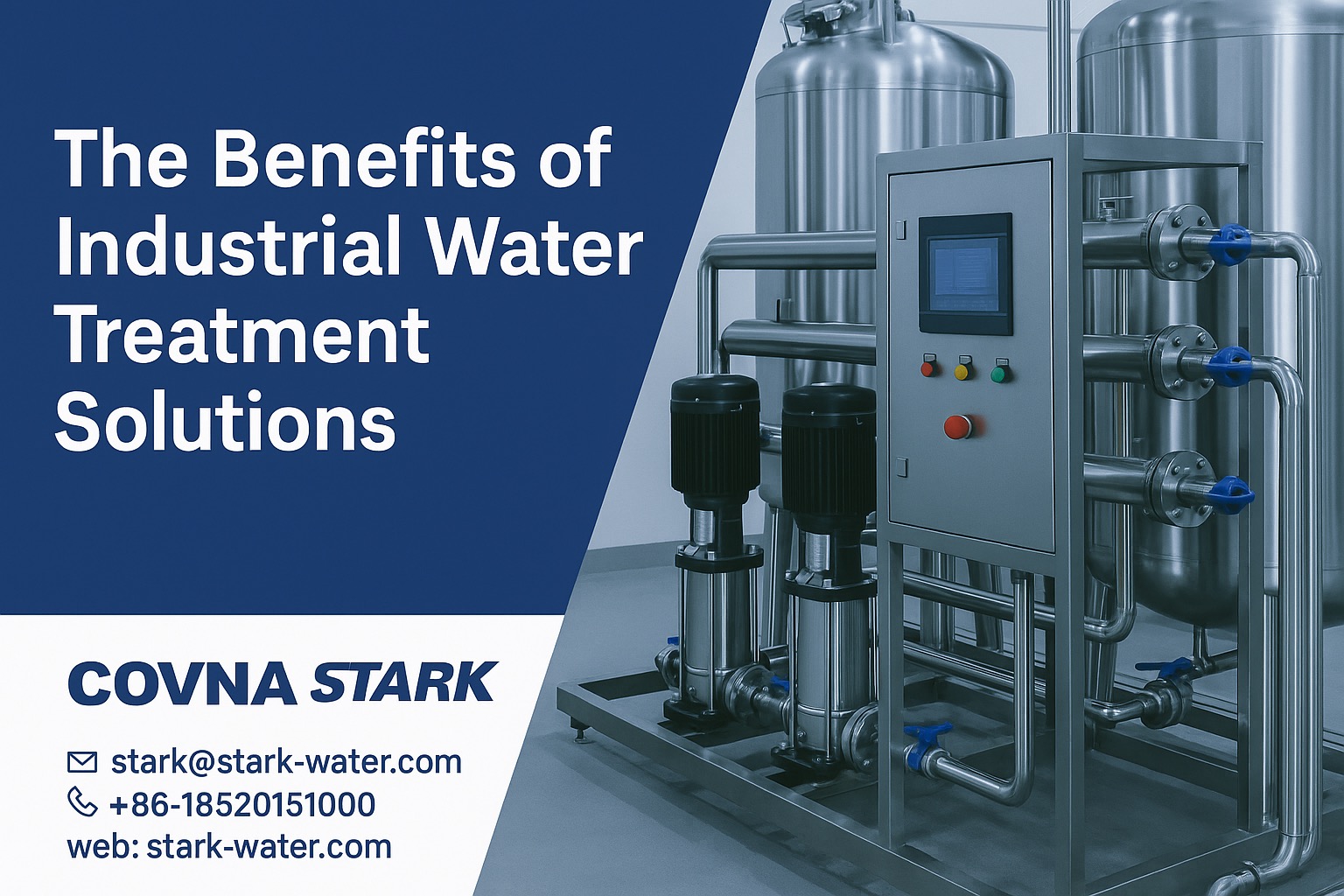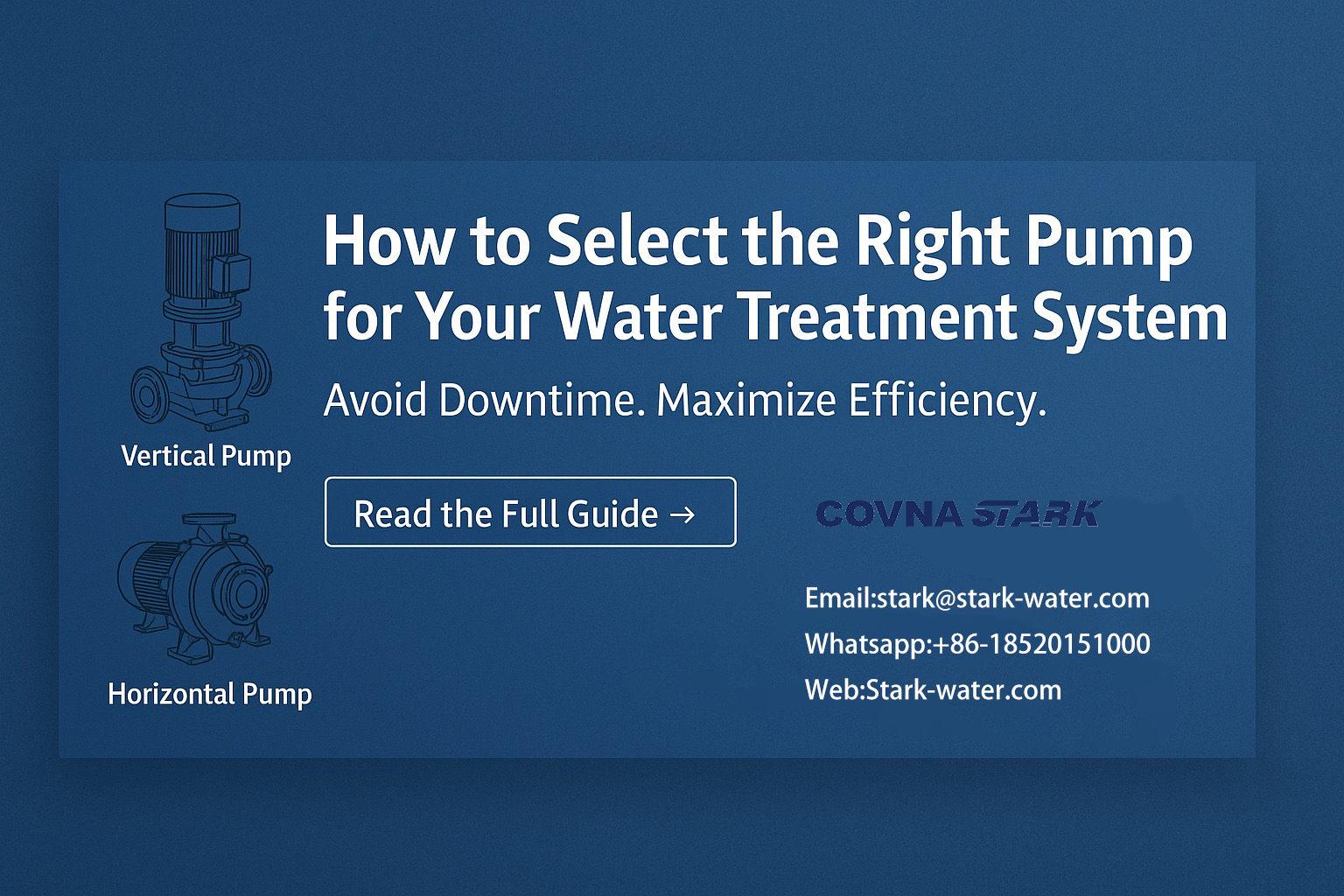In industrial water treatment systems, pumps are the unsung heroes that keep everything flowing—literally. Whether you’re designing a reverse osmosis (RO) system, operating an ultrafiltration unit, or maintaining a chemical dosing process, the choice of pump directly impacts system efficiency, energy consumption, and operational stability.
But selecting the right pump isn’t just about horsepower or flow rate. It requires a deep understanding of your specific process conditions, system configuration, and long-term performance requirements. From vertical multistage centrifugal pumps to horizontal end-suction models, each type offers advantages and limitations that must align with your treatment goals.
This comprehensive guide walks you through the fundamentals of pump selection in water treatment systems. You’ll learn:
- The differences between vertical and horizontal pump designs
- Common issues in pump operation and how to solve them
- Key factors to consider when choosing a pump for your application
- Real-world advice from the engineering team at Air STARK
Whether you’re an engineer, project manager, or procurement specialist, this article is designed to help you make confident, technically sound pump decisions that support the reliability and longevity of your water treatment system.
Types of Pumps Commonly Used in Water Treatment Systems
Choosing a pump begins with understanding the types of pumps available and how they function within water treatment operations. In industrial applications, the most common pump types include:

1. Centrifugal Pumps
Centrifugal pumps are the most widely used pump type in water treatment systems. They operate on the principle of centrifugal force: water enters through the suction port and is accelerated by an impeller, converting mechanical energy into fluid velocity and pressure. These pumps are ideal for handling large volumes of low-viscosity liquids such as raw water, filtered water, or treated effluent.
Applications:
- Reverse osmosis feed pumps
- Ultrafiltration circulation
- Transfer of softened or clarified water
2. Positive Displacement Pumps
Positive displacement (PD) pumps work by trapping a fixed amount of fluid and forcing it through the discharge pipe. Unlike centrifugal pumps, PD pumps maintain a constant flow regardless of system pressure. This makes them highly suitable for chemical dosing, sludge transfer, or any application that requires precision metering.
Applications:
- Chemical injection (chlorine, antiscalants)
- Sludge handling in wastewater plants
- High-pressure membrane cleaning
Each type of pump plays a unique role in different stages of water treatment. Your system’s performance depends on selecting not just the right size or pressure rating—but the right pump technology for your specific application.
Vertical vs. Horizontal Pumps: Which One Is Right for Your Water Treatment System?
When designing or upgrading an industrial water treatment system, one of the most critical decisions is whether to use a vertical or horizontal pump. While both pump types may perform similar hydraulic functions, their construction, footprint, and application suitability differ significantly.
Key Differences Between Vertical and Horizontal Pumps
| Fitur | Vertical Pump | Horizontal Pump |
|---|---|---|
| Instalasi | Requires less floor space, often mounted over tanks | Requires a baseplate or floor mounting |
| Maintenance Access | Easier to inspect bearings, seals aboveground | Requires lateral space for motor/pump alignment |
| Suction Conditions | Suitable for deep wells or pits | Preferred for surface-mounted systems with flooded suction |
| NPSH Performance | Excellent for low NPSH systems | May require booster or priming in some cases |
| Noise/Vibration | Lower vibration due to vertical shaft alignment | Can transmit more vibration, depending on base stiffness |
| Typical Applications | Water intake, RO feed, vessel-bottom installation | Booster systems, circulation pumps, skid-mounted systems |
Which One Should You Choose?
Choose a vertical pump if:
- You have limited floor space and need over-tank or deep well installation
- You require high head for RO or similar applications
- Your NPSH available is limited
- You operate in marine, offshore, or vertical tank environments
Choose a horizontal pump if:
- You prefer easier installation and alignment
- Side maintenance access is important
- You are building a portable or skid-based system
- You require high flow with moderate pressure
Centrifugal Pumps: The Workhorse of Water Treatment Systems
Centrifugal pumps are at the heart of most modern water treatment systems. From raw water intake to high-pressure RO feed and final effluent discharge, these pumps play a vital role in moving large volumes of water reliably and efficiently.
How Centrifugal Pumps Work
A centrifugal pump operates by using a rotating impeller to increase the velocity of water. This kinetic energy is then converted into pressure energy as the water moves through the volute casing. The result: continuous, high-volume flow at relatively low cost and maintenance.
Core Components of a Centrifugal Pump
- Impeller – the rotating component that imparts velocity to the fluid
- Casing (volute or diffuser) – converts velocity into pressure
- Suction inlet – where water enters the pump
- Discharge outlet – where pressurized water exits the system
- Motor (or driver) – provides the rotational force needed to drive the impeller
Where Centrifugal Pumps Are Used in Water Treatment
- Pre-filtration water transfer
- RO feed boosting
- Softened or deionized water delivery
- Backwashing of sand/media filters
- Wastewater recirculation and discharge
Need a high-performance centrifugal pump for your next project? Explore STARK’s Reverse Osmosis Systems dan Peralatan Ultrafiltrasi, all equipped with pump configurations tailored for industrial demands.
10 Common Pump Problems in Water Treatment Systems – and How to Fix Them
Even a perfectly selected pump can fail if it’s not operated or maintained correctly. Below are 10 of the most frequent issues encountered in industrial water treatment systems—along with their causes and professional troubleshooting tips.
| Problem | Likely Cause | Recommended Solution |
|---|---|---|
| Pump does not discharge | Air trapped in suction line | Prime the pump and check suction piping for leaks |
| Pump runs but low flow | Worn impeller or excessive suction head | Inspect impeller; verify NPSHa meets requirements |
| Vibration and noise | Misalignment or loose foundation bolts | Realign pump and motor; tighten mounting hardware |
| Overheating motor | Pump operating off curve; flow too low | Adjust system head or select a more suitable pump |
| Cavitation (rattling sound) | Low NPSH available, high suction lift | Lower pump installation; reduce suction losses |
| Frequent seal failure | Dry running or abrasive fluid | Install seal flush system or use appropriate materials |
| Pump loses prime | Suction line leak or air ingress | Tighten connections; use foot valve if needed |
| High power consumption | Impeller oversized or clogged | Trim impeller or clean piping/system |
| Pump starts/stops frequently | Pressure switch or control issue | Inspect controls and install surge tank if needed |
| Noisy bearings | Lack of lubrication or worn parts | Lubricate or replace bearings |
Pro Tips for Long-Term Pump Reliability
- Monitor pump performance regularly and log key parameters (pressure, flow, amps)
- Always follow the manufacturer’s recommended startup and shutdown procedures
- Use vibration sensors or thermal imaging for preventive maintenance
- Never operate the pump under zero flow or dry conditions
Want a custom-built pumping solution with long-term stability and performance? Visit STARK Water’s Contact Page and get expert advice tailored to your system.

